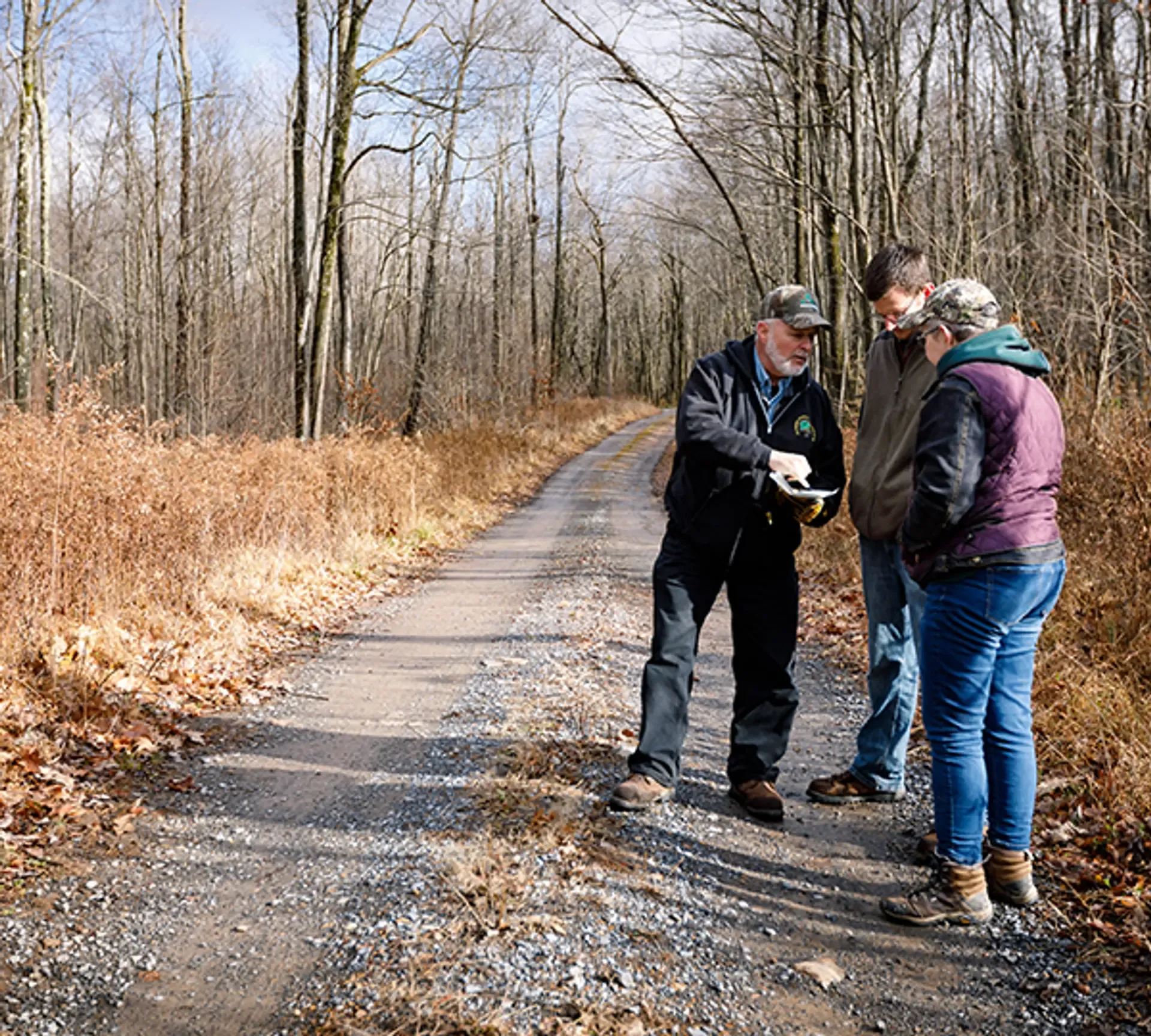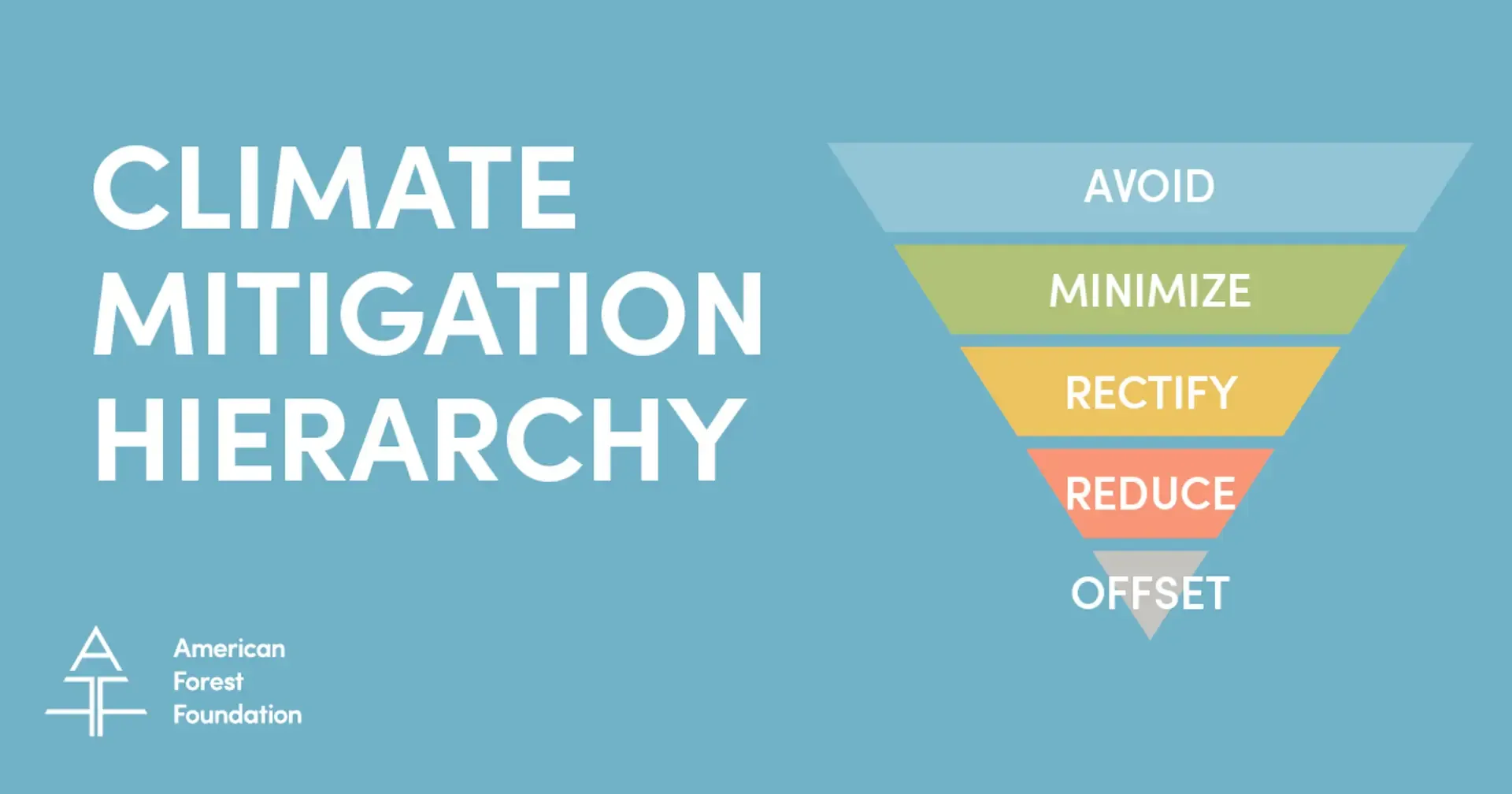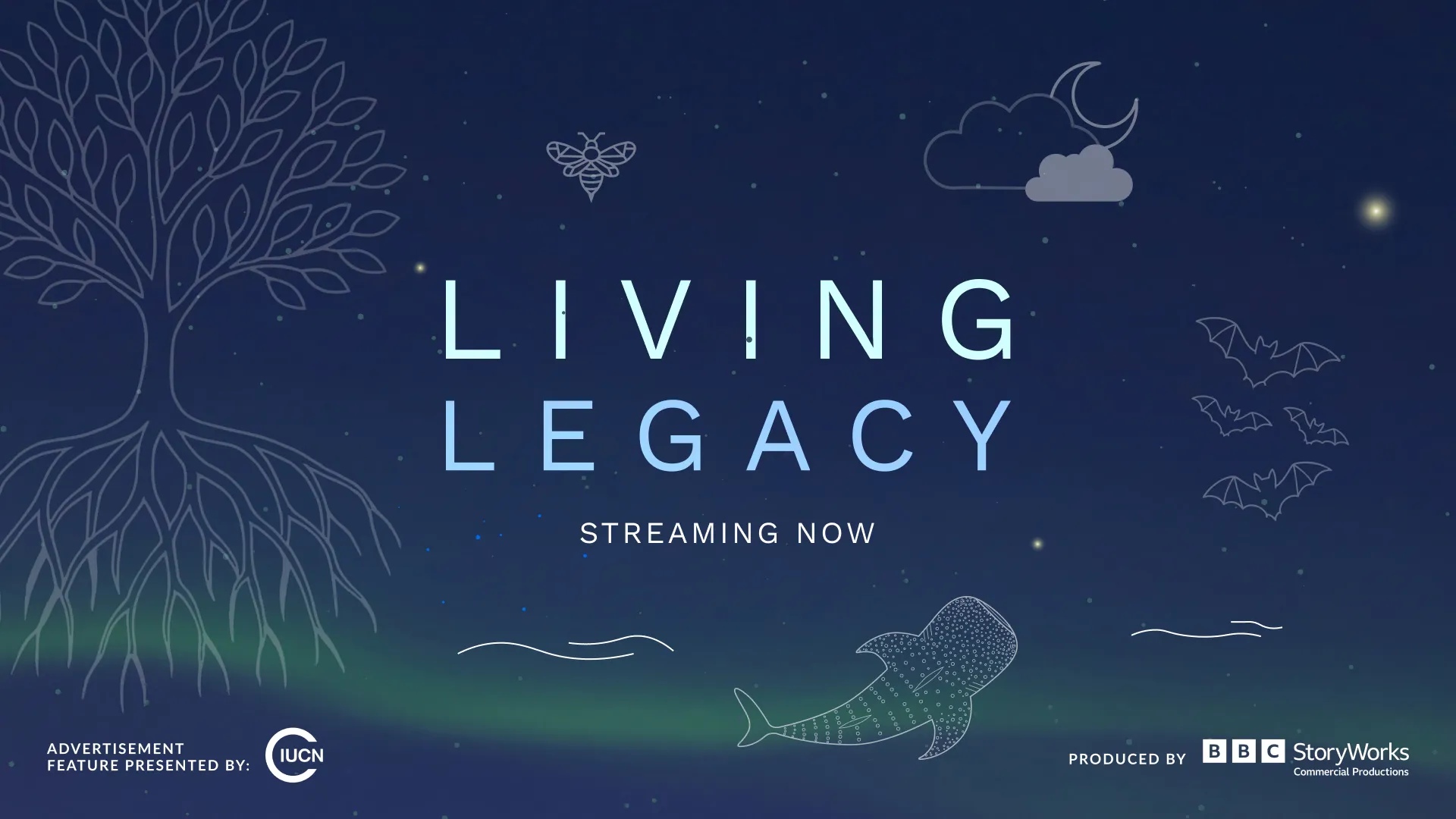When and How to Leverage Family Forest Carbon

Landowner Susan Benedict (PA) with foresters.
Growing stakeholder and investor pressure for climate change commitments has resulted in numerous corporate announcements of publicly declared reduction targets, including Amazon, Microsoft, BMW and many more. In fact, research by Natural Capital Partners found that 23% of Fortune 500 companies have committed to achieving audacious climate goals for 2030, including going carbon neutral, using 100% renewable energy, or meeting a Science-Based Target Initiative (SBTi) target.
While these declarations make headlines regarding WHAT companies will do, what is missing in the fine print of these articles are HOW the company will actually achieve these goals.
But how does a company begin to systemically address their carbon footprint? Perhaps the answer lies in a framework used by conservationists for over a century, the carbon mitigation hierarchy.
The carbon mitigation hierarchy is a blueprint for aligning corporate actions for climate change with the dynamics of natural systems and prioritizing the actions that lead to the best outcomes for people and nature. The hierarchy calls for companies to address climate change in a certain order:

Avoid: Avoid creating impacts from the outset;
Reduce: Reduce the intensity and/or extent of impacts that cannot be completely avoided;
Restore: Restore degraded ecosystems or capture some energy/material benefit;
Compensate: Compensate for any significant residual, adverse impacts that cannot be avoided, reduced, and/or restored;
Offset: A type of compensation measure combined with a negative impact to produce a “net” or “neutral” outcome.
It is important to note that the hierarchy places more direct actions such as avoidance at the top and more indirect actions like offsets at the bottom, ensuring that companies seek out all potential means for directly reducing their GHG emissions BEFORE seeking out offsets.
The American Forest Foundation (AFF) and our partner The Nature Conservancy (TNC) believe all of the components of the carbon mitigation hierarchy need to be a part of a company’s climate strategy. Once those collective efforts have been exhausted, the Family Forest Carbon Program can help corporations take the last step needed to achieve their goals. The Family Forest Carbon Program offers a path for companies to address their outstanding or residual emissions or the emissions in their supply chain through carbon credits.
The dedication and hard work of America’s family forest owners can help corporations reach the finish line, yet the real work begins at the starting line.
Related Articles

December 4, 2025
Forest Carbon Project Issued First Ever Credits
Conservation organizations the American Forest Foundation (AFF) and The Nature Conservancy (TNC) announced today the issuance of improved forest management (IFM) carbon credits to the Family Forest Carbon Program (FFCP) from standards setter Verra under its Verified Carbon Standard (VCS) Program. This marks the first issuance of credits produced using Verra’s VM0045 improved forest management (IFM) methodology, which was co-developed by Verra, AFF, TNC, and TerraCarbon.

December 1, 2025
Tackling Wildfire Through Partnership: AFF’s Stacked Benefits Model
A few miles outside Grass Valley, California, a narrow road winds past homes tucked into dense forest. From the ground, it is easy to forget that these trees are doing something extraordinary. They are standing between the community and the next wildfire.

November 20, 2025
New Film Showcases Carbon Project’s Impact on Family Landowners and Nature
The American Forest Foundation (AFF), a national organization committed to empowering family forest owners to create meaningful conservation impact, announced today the release of a new film that tells the story of the Family Forest Carbon Program (FFCP) and its impact on people and the planet.